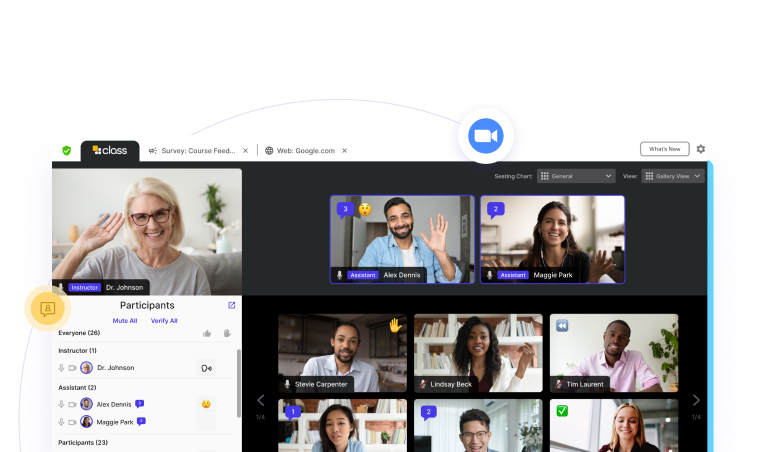
Daniel Hansen is an award-winning sales leader and VP of Corporate Sales at Class. He has a proven track record of building high-performing teams and attaining quotas in over 15 years of selling software. Prior to Class, he spent nine years in the virtual classroom space.

Daniel Hansen is an award-winning sales leader and VP of Corporate Sales at Class. He has a proven track record of building high-performing teams and attaining quotas in over 15 years of selling software. Prior to Class, he spent nine years in the virtual classroom space.

Every company looks for ways to maintain a competitive edge. If you’re not evaluating what your competitors are doing and formulating plans to stay ahead of the curve, you’re at risk of falling behind. Organizations with distributed teams need scalable, high-quality training solutions to keep their workforces sharp and competitive. And virtual classrooms have emerged as a solution for this need, offering a faster, more efficient way to deliver training that’s both flexible and effective.
In spite of the availability of this new technology, many businesses still rely on traditional web conferencing tools for learning, simply because it’s what they have access to and they’re familiar with functionality. But these tools often fall short of delivering rich, engaging learning experiences. With a purpose-built virtual classroom, you’re able to provide a more tailored environment for training that speeds up the learning processes, enables quicker skills application, and offers constant, effective training across teams—no matter their location.
While at first glance, standard web conferencing tools provide an adequate environment for learning. However, when you look deeper and begin to put them into practice, you uncover some inadequacies that don’t support and sometimes even hinder the learning experience. Let’s take a closer look at some of the bigger challenges organizations face when using these tools for training.
When it comes to delivering training that sticks and drives real-world results, purpose-built virtual classrooms stand head and shoulders above traditional web conferencing tools. These platforms are designed with learning in mind, offering a wealth of features and capabilities that make the entire training process smoother, more engaging, and ultimately more effective. The top four advantages of these platforms are:
Why should virtual training solutions matter to learning and development leaders? These platforms offer high efficiency, providing the ability to scale cost-effective training while maintaining quality and engagement. This translates directly to cost savings, as companies that implement virtual training programs experience a 50% increase in productivity compared to those relying solely on traditional training methods.
With the ability to provide faster onboarding and upskilling, employees get up to speed much quicker, reducing the time it takes to reach peak productivity. Additionally, consistent and standardized training quality ensures uniform learning outcomes across distributed workforces and global teams. When it comes to ROI on training programs, virtual classrooms deliver by reducing training needs, improving learner engagement, and increasing knowledge retention, all combining to drive measurable business impact. In the long run, these benefits lead to improved performance, reduced turnover, and a more skilled workforce—all contributing to a stronger bottom line.
Put plainly, investing in purpose-built virtual classrooms is a smart move. These platforms accelerate onboarding and upskilling while helping employees gain the skills they need quickly. Organizations that can onboard and develop talent faster will be better positioned than their competitors to succeed. The call to action for learning and development leaders? To ensure success in the future, assess training needs now, and choose a platform designed to drive engagement, efficiency, and business results.
Why wait to get started? To explore how our platform can help your team thrive, speak with a Class expert today.

Daniel Hansen is an award-winning sales leader and VP of Corporate Sales at Class. He has a proven track record of building high-performing teams and attaining quotas in over 15 years of selling software. Prior to Class, he spent nine years in the virtual classroom space.

Daniel Hansen is an award-winning sales leader and VP of Corporate Sales at Class. He has a proven track record of building high-performing teams and attaining quotas in over 15 years of selling software. Prior to Class, he spent nine years in the virtual classroom space.
Get our insights, tips, and best practices delivered to your inbox

Sign up for a product demo today to learn how Class’s virtual classroom powers digital transformation at your organization.

Features
Products
Integrations